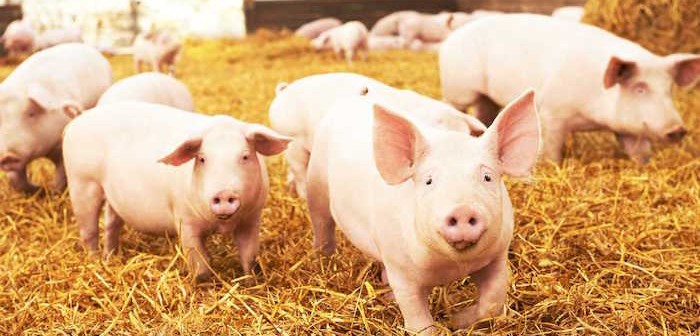A severely under-pressure pig producer has highlighted the impact of soaring input costs on their business to demonstrate why the pig price needs to lift beyond £2/kg, if producers are to survive.
An already desperate situation on pig farms across the country was pushed beyond the survival limit for many since Russia’s invasion of Ukraine prompted a dramatic leap in the wheat price to in the region of £300/tonne, compared with around £215/tonne just a few days ago. Soya prices are also eye-wateringly high, while other input costs, including energy, fuel and labour continue to rise.
Pig producers have endured more than a year of negative margins, including typically losing around £25/pig in the first half of 2021, increasing to an unprecedented £39/pig in the final quarter. That was with wheat at around £190-£210/t.
Net margins will have worsened significantly during the current quarter, leaving many producers facing a battle for survival. While producers have been encouraged by recent price rises, with the SPP still below the 150p/kg mark, this can only be the start.
Feed cost
The anonymous pig farmer, with an indoor herd, said feed accounted for approximately 65% of their costs:
- Cereals account for 60% of the diet, and the increase from £200/t to £300/t represents a £60/t rise in finished feed cost.
- Soya, at 10% of the diet, has increased from £300/t to £500/t, representing a £20/t per tonne feed cost hike.
- All the other oils, fats and supplements have risen in tandem.
- Many producers will be facing £100/t feed increases, or over £25/pig for finisher feed, plus over £5/pig on sow feed increases. Costs are rising daily.
Backlog impact
The feed situation is made much worse for the many farms that have been feeding large backlogs of pigs. In many cases, the overweights have been contained by feeding low density specification diets taking 7-10 days longer to get to slaughter.
These diets, largely comprised of wheat-feed, adding 10 days of feed cost at an FCR of 4:1 on very heavy pigs, have added approximately £1.20/pig/day.
For a producer with 1,000 pigs backlogged, that equates to £1,200/day, for ‘lairaging’ pigs on farm.
“The alternative is a penalty for an overweight pig at £60 plus per pig or very heavy pigs that are not paid for at all. It is imperative that this is rapidly resolved,” the producer said.
Other costs add to the pressures
Electric, fuel and haulage are all, generally, relatively minor costs but in current circumstances, they become very significant because of the size of the increases and how this impacts already massively stretched margins, further exacerbating losses.
For example, a typical 700 sow unit with good production levels (28 sold/sow/year), electric heating in farrowing house and nurseries, and fanned buildings on a commercial tariff could see costs rise from £2.25/pig, £44,100 in total, three-fold to £6.75/pig, £132,300. That is an increase of nearly £90,000.
Diesel rises affect cleaning-out processes, slurry and manure handling and haulage to factory. The farm’s straw-based systems, 2 and 3 stage production and distance from the factory makes these cost increases significant. Feed and livestock are hauled big distances. In many European countries, haulage to factory is short distances and costs picked up by the processor.
The producer concluded: “Faced with little prospect of respite from the above and potentially more upside in cost rises, producers need immediate relief or the processors risk a significant swathe of the industry exiting to contain their losses.
“This is a true test of the supply chain. Processors calling for immediate price rises have it within their gift (from their profitable businesses) to address this immediately.”
Widespread impact
At March’s NPA Pig Industry Group meeting, after which the NPA called for prices to increase to beyond £2/kg, producers from across the regions set out the impact on their businesses of the recent cost increases.
- One producer explained how their feed costs increased from £78/pig in April 2021 to £101/pig in March, and are set to soar to £119/pig in April 2022 due to the higher wheat price.
- Another producer said his business’s overall costs of production had risen from 160p/kg in December to over 200p/kg now and are likely to go higher. Others put similar, or higher, figures on current production cost.
- Another estimated that, with forecast losses of £50/pig, a 700-sow pig unit will lose £1 million over the next year at current prices and costs.
“Nobody can survive with wheat at £300/tonne. The situation is now beyond desperate,” NPA chairman Rob Mutimer said during the meeting.




